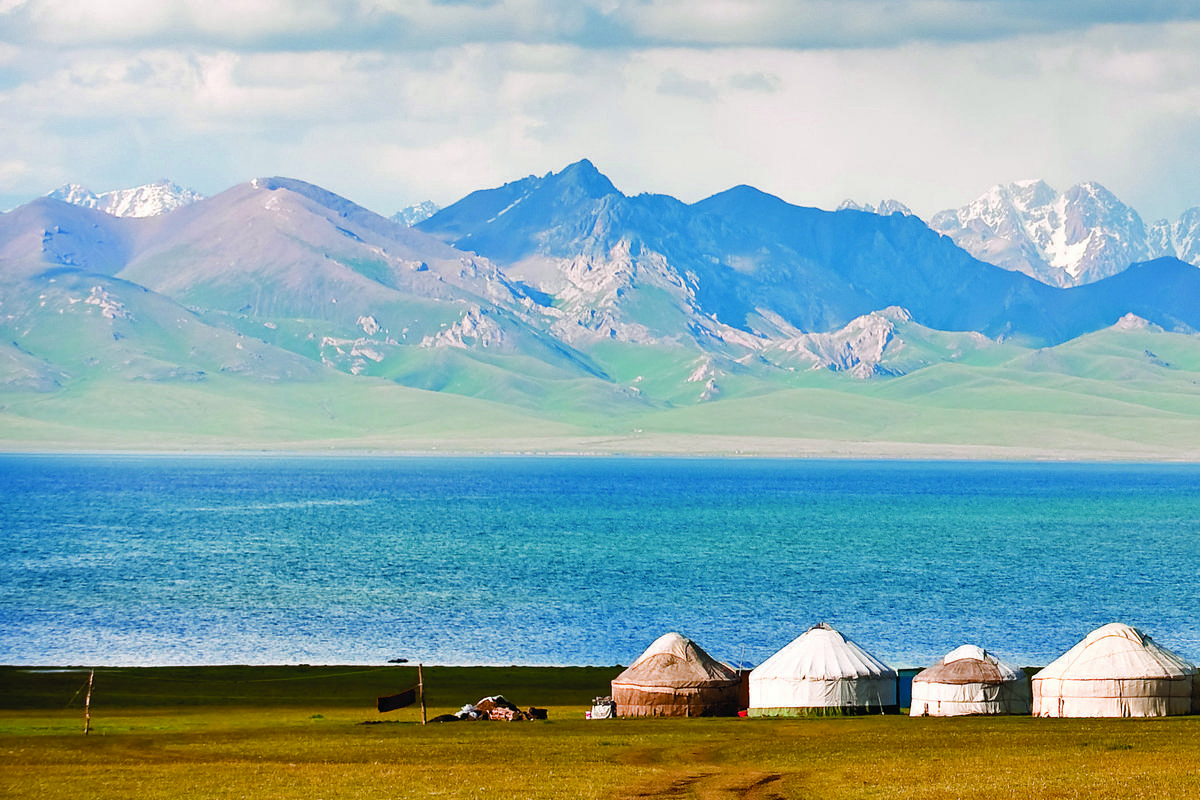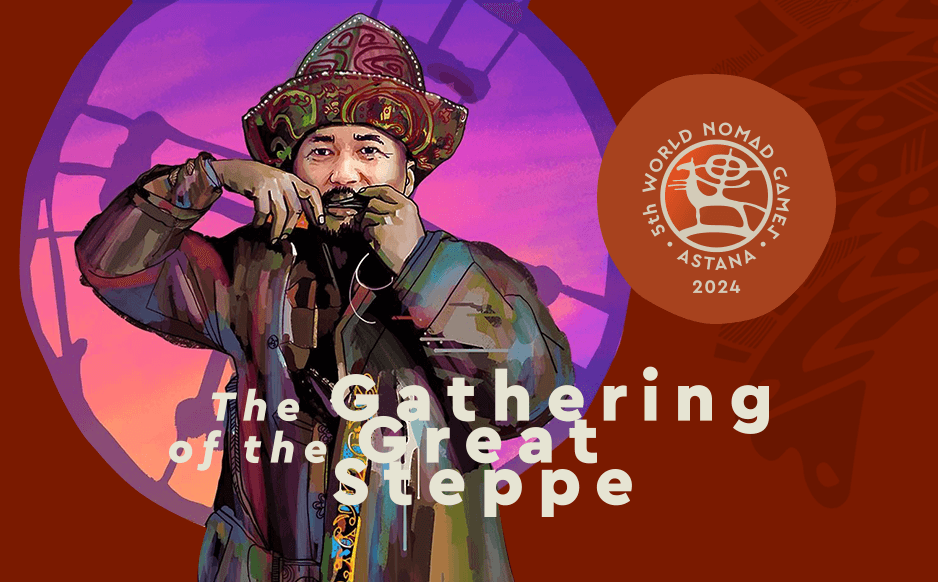About the Kyrgyz
The Kyrgyz are one of the ancient Central Asian nations.
How did the ethnonym Kyrgyz appear?
Origins of state, culture, literature, religion, and sports games.
Origin
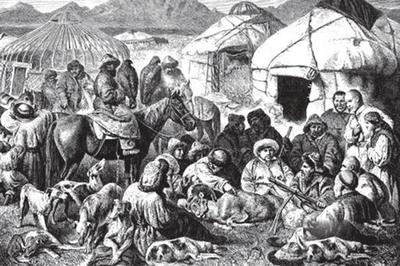 Folklore offers several options for the origin of this people’s name. For example, the word “kyrgyz” is explained by the union of the words “kyrk” – which means “forty” and “kyz” – “girl”. That is, kyrgyz people descended from 40 girls.
Folklore offers several options for the origin of this people’s name. For example, the word “kyrgyz” is explained by the union of the words “kyrk” – which means “forty” and “kyz” – “girl”. That is, kyrgyz people descended from 40 girls.
The origin of the ethnonym kyrgyz might also be a compound of the words “kyrk” and “oguz” – the combination of forty clans of Oguz tribes. The third version is a compound of “kyr” – “mountain” and “oguz”, that translates as the mountain tribes. This version is stated in the legends of Abul Gaza Bahadur Khan: “Kyrgyz is the name of Oguz Khan’s grandson.” Moreover, according to the legend of Sultan Sanjar, who lived in the twelfth century, the Kyrgyz are descendants of forty Uzgen Oguz people, who fled to Khujand from his troops.
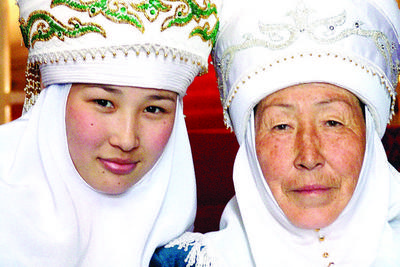 The scientist V. Radlov divided the word “kyrgyz” into “kyrk” and “yus” – forty hundred, while Ahmed Zeki Velidi Togan argued that ethnonym kyrgyz comes from “kyrk” and “er” – forty men, while D. Aitmuratov preferred the interpretation “kyra” and “gyz” – “black- haired people” (although according to the same history of ethnic Kyrgyz people were red-haired and blue-eyed). K. Petrov chose another version by dividing the “kyrgyz” to “kyryg” (“kyzyl” – red) and plural suffix “yz”. Other scientists also tended towards red. According to Baskakov, the ethnonym came from “kyryg” and “oguz” – red (i.e. the southern) people, and according Kononov “kyrgyn” – ruddy, that is precisely the representatives of the phenotype that is described in the aforementioned story: the blue-eyed, bright and ruddy. In ancient times, racial signs of Europeoid predominated among the Turkic people.
The scientist V. Radlov divided the word “kyrgyz” into “kyrk” and “yus” – forty hundred, while Ahmed Zeki Velidi Togan argued that ethnonym kyrgyz comes from “kyrk” and “er” – forty men, while D. Aitmuratov preferred the interpretation “kyra” and “gyz” – “black- haired people” (although according to the same history of ethnic Kyrgyz people were red-haired and blue-eyed). K. Petrov chose another version by dividing the “kyrgyz” to “kyryg” (“kyzyl” – red) and plural suffix “yz”. Other scientists also tended towards red. According to Baskakov, the ethnonym came from “kyryg” and “oguz” – red (i.e. the southern) people, and according Kononov “kyrgyn” – ruddy, that is precisely the representatives of the phenotype that is described in the aforementioned story: the blue-eyed, bright and ruddy. In ancient times, racial signs of Europeoid predominated among the Turkic people.
Where are the Kyrgyz from
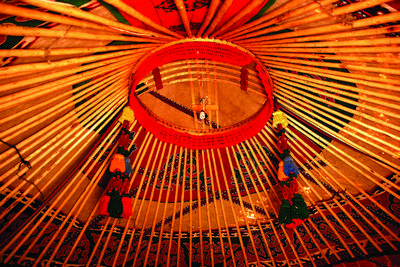 Enesai or Yenisei (the valley of Yenisei river in the southern part of Siberia) is considered as a historic homeland of the Kyrgyz people. Yenisei is featured in a number of legends, the main of which is the legend of mother doe. According to this legend, a doe saved the last children of Kyrgyz people from death and brought them to the fertile land, the shores of Lake Issyk-Kul (in Japan there is a similar legend about the doe, who saved two kids, and in the city of Nara, doe are revered as sacred animals).
Enesai or Yenisei (the valley of Yenisei river in the southern part of Siberia) is considered as a historic homeland of the Kyrgyz people. Yenisei is featured in a number of legends, the main of which is the legend of mother doe. According to this legend, a doe saved the last children of Kyrgyz people from death and brought them to the fertile land, the shores of Lake Issyk-Kul (in Japan there is a similar legend about the doe, who saved two kids, and in the city of Nara, doe are revered as sacred animals).
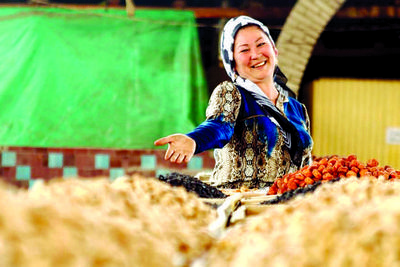 In addition, Mongolia, or rather the place where lake Hyargaas-Nur (Kyrgyz-Nur) is located, is also mentioned as a home to, or one of the homelands of the Kyrgyz in the past.
In addition, Mongolia, or rather the place where lake Hyargaas-Nur (Kyrgyz-Nur) is located, is also mentioned as a home to, or one of the homelands of the Kyrgyz in the past.
Modern historians defend the idea that the place of settlement of Kyrgyz in the fourth century B.C. was a region of East Tenir-Too (i.e. mountain and valley areas of current Xinjiang-Uigur autonomous region of China).
This way, ancient Kyrgyz lived in the valley of Manas river, on the northern slope of the Boro-Khoro mountain ridge. Historically, their neighbors were Huns, Usuns, Dinlins, Tohars, Han and other ethnicities.
What did the Kyrgyz do
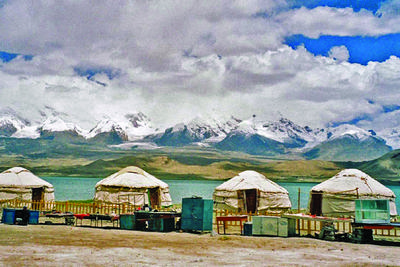 As a result of social nihilism policy, a false impression was created that modern culture came to Kyrgyz people only with the advent of the Soviets. Kyrgyz people were cattle breeders, farmers and were also engaged in craftsmanship. Also, they were engaged in metallurgy.
As a result of social nihilism policy, a false impression was created that modern culture came to Kyrgyz people only with the advent of the Soviets. Kyrgyz people were cattle breeders, farmers and were also engaged in craftsmanship. Also, they were engaged in metallurgy.
To this day, traces of Kyrgyz and Turkic runic writings and ɝne art can be found on the banks of the Yenisei river, Mongolia, Altay, Tengir-Too, and other regions of Central Asia.
Part of the Kyrgyz in the Middle Ages also wrote with Uyghur, Mongolian script and Chinese characters, and from the tenth century to today – Arabic script. In 1928-1940, Kyrgyz also used Latin. Since 1940, part of the Kyrgyz of Central Asia uses the Cyrillic alphabet.
How did the Kyrgyz live
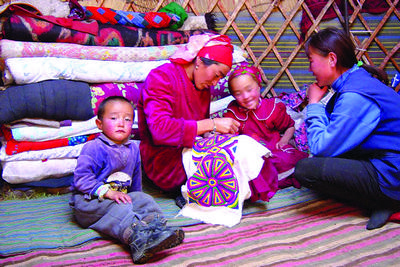 In 2002, the United Nations and UNESCO celebrated the 2,200th anniversary of the ancient Kyrgyz statehood. As we know from the historical chronicle “Shi Ji” (“Historical Records” of the ancient Chinese historian Sima Qiang), the land of ancient Kyrgyz state was conquered by nomadic empire of the Huns in 202-201 BC. As part of the Hun army the Kyrgyz were involved in a variety of historical events in Inner and Central Asia.
In 2002, the United Nations and UNESCO celebrated the 2,200th anniversary of the ancient Kyrgyz statehood. As we know from the historical chronicle “Shi Ji” (“Historical Records” of the ancient Chinese historian Sima Qiang), the land of ancient Kyrgyz state was conquered by nomadic empire of the Huns in 202-201 BC. As part of the Hun army the Kyrgyz were involved in a variety of historical events in Inner and Central Asia.
Although only for a short time, Independent State of the Kyrgyz was restored in 56 BC. As Chinese historian Ban Gu recorded, the state of Huns were weak and Kyrgyz achieved the restoration of sovereignty in that time.
Where did the Kyrgyz live
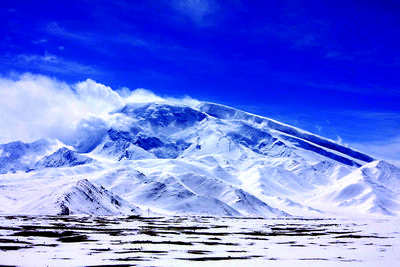 In the first half of the first millennium AD the main home of the Kyrgyz remained the eastern part of Tenir-Too. By that time, part of the Dinlins assimilated with the Kyrgyz and became a part of this nation. In the 5th century, together with the Turks of the eastern Tenir Too, ancient Kyrgyz fought Zhuanzhuans and, as a result, were defeated. The Turks were forced to move to Altai, Kyrgyz – to the Yenisei.
In the first half of the first millennium AD the main home of the Kyrgyz remained the eastern part of Tenir-Too. By that time, part of the Dinlins assimilated with the Kyrgyz and became a part of this nation. In the 5th century, together with the Turks of the eastern Tenir Too, ancient Kyrgyz fought Zhuanzhuans and, as a result, were defeated. The Turks were forced to move to Altai, Kyrgyz – to the Yenisei.
At this time emerged the legend of the mother wolf, the forebearer of the Kyrgyz. (Italians have the similar legends regarding the origin of Rome, where brothers Romulus and Remus were nurtured by a wolf. Similarly, the Hungarians also have an analogous legend as well as many other ethnic groups.)
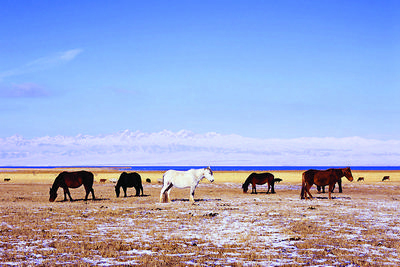 At Yenisei, Kyrgyz restored their state in the form of Kyrgyz Khanate. The state had strong diplomatic and trade relations with Tan China, Tibet, Tyurgesh and Karluk states and Arabic Halifax.
At Yenisei, Kyrgyz restored their state in the form of Kyrgyz Khanate. The state had strong diplomatic and trade relations with Tan China, Tibet, Tyurgesh and Karluk states and Arabic Halifax.
Between 840-925, the State gained vast expanses of Inner and Central Asia, adjacent to the Central Tenir Too. This era was called by academician V.V. Bartold “the Great Kyrgyz statehood” and Russian archaeologist Yu.S.Hudyakov called it the “finenst hour” of medieval Kyrgyz history.
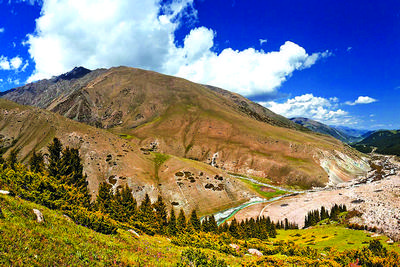 The Kyrgyz settled back in the Tenir-Too, and restored its statehood in the tenth centry. In 2014, Independent Kyrgyzstan celebrated the 90th anniversary of the establishment of the Kara-Kyrgyz Autonomous Oblast under the USSR. It then became the Kyrgyz Autonomous Soviet Socialist Republic in 1929, and the Kyrgyz SSR in 1936, and announced its state independence in August 31, 1991.
The Kyrgyz settled back in the Tenir-Too, and restored its statehood in the tenth centry. In 2014, Independent Kyrgyzstan celebrated the 90th anniversary of the establishment of the Kara-Kyrgyz Autonomous Oblast under the USSR. It then became the Kyrgyz Autonomous Soviet Socialist Republic in 1929, and the Kyrgyz SSR in 1936, and announced its state independence in August 31, 1991.
Furthermore, China was celebrating the 60th anniversary of Kyzyl-Suu Kyrgyz autonomous district with the center in the city of Artysh, this year. This region assimilated with the Kyrgyz and became a part of this nation in the 5 th century.
Who / What did the Kyrgyz believe in?
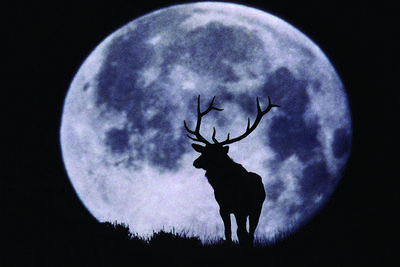 Lions (Arstan), deer (Bugu), elk (Bagis), wolf (byoryu), snow leopard (ilbirs), bear (adyg – ayuu) and others were sacred animals (totems) of the ancient Kyrgyz. In addition, they worshiped Tenir (divine heaven), celestial bodies (planets and the moon), as well as fire.
Lions (Arstan), deer (Bugu), elk (Bagis), wolf (byoryu), snow leopard (ilbirs), bear (adyg – ayuu) and others were sacred animals (totems) of the ancient Kyrgyz. In addition, they worshiped Tenir (divine heaven), celestial bodies (planets and the moon), as well as fire.
With the tenth century, when the western part of the Kyrgyz was in orbit Karakhanid Khanate, Islamization started. A feature of Islam among the Kyrgyz people was that they were followers of the tolerant Hanaf Sunni Islam, which allows for the preservation of many elements of pre-Islamic traditions and beliefs.
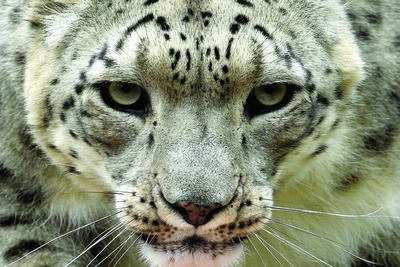 An eastern group of Kyrgyz remained in orbit of Shamanism, Buddhism and other religious beliefs. The northern and eastern descendants of ancient Kyrgyz, such as Khakassia, Tuva, Altai, and the Kyrgyz in Manchuria (northern China) remained shamanists.
An eastern group of Kyrgyz remained in orbit of Shamanism, Buddhism and other religious beliefs. The northern and eastern descendants of ancient Kyrgyz, such as Khakassia, Tuva, Altai, and the Kyrgyz in Manchuria (northern China) remained shamanists.
Another part of Tuva and, the so-called Kyrgyz-Kalmaks living on Tarbagat became Buddhists-Lamaists. The main part of modern Kyrgyz people are Muslims, although there are Christians, atheists and those who identify themselves as Tengrianists. Bashkir Kyrgyz also became Muslims and those groups, which assimilated among other Muslim Turkic peoples (Kazakhs, Uzbeks, Karakalpaks, Nogai, and others).
How they played?
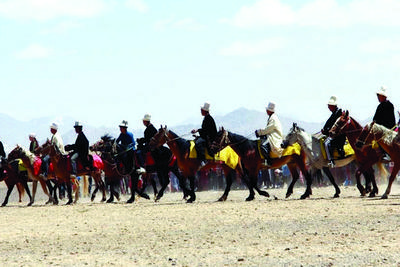 Since ancient times Kyrgyz people have been a part of the nomadic civilizations of Eurasia, where the people's sports were associated with military arts, the art of riding (equestrian), hunting traditions, archery, wrestling, and logic games (such as "ordo", "toguz korgool", "chatyrash", i.e. chess "doybu" i.e. drafts, etc).
Since ancient times Kyrgyz people have been a part of the nomadic civilizations of Eurasia, where the people's sports were associated with military arts, the art of riding (equestrian), hunting traditions, archery, wrestling, and logic games (such as "ordo", "toguz korgool", "chatyrash", i.e. chess "doybu" i.e. drafts, etc).
Often these games were organized on an international level, and the Kyrgyz and other Turkic-Mongolian peoples invited sport competitors from different countries, mostly historical neighbors. It was perfectly recorded in the heroic epic "Manas" (in terms of the funeral feast in honor of Keketey Khan).




